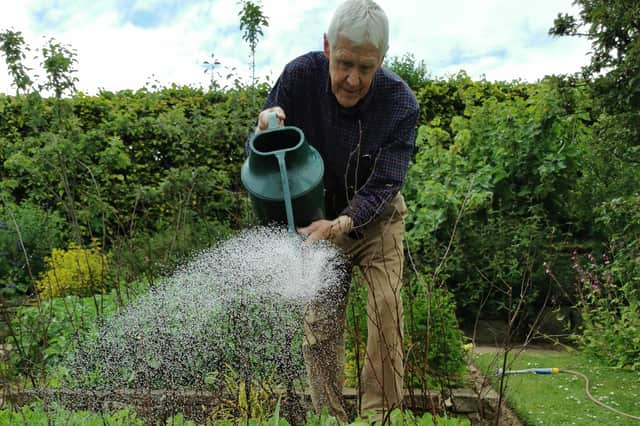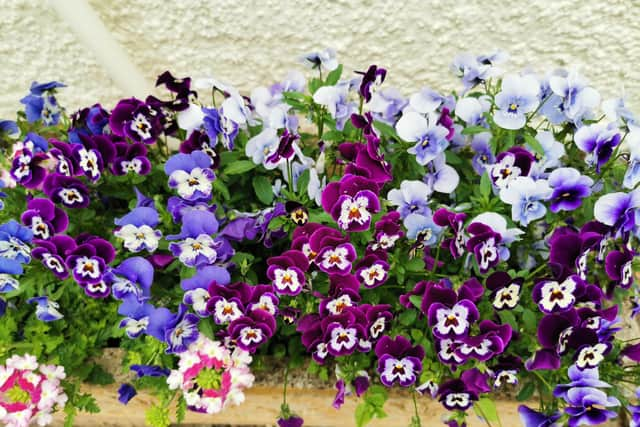Distressing sight of plants hit by drought


A sequence of hot, sunny days assisted by a drying wind, can put garden plants both new and old under severe stress, more so when moisture lost through their leaves (transpiration) far exceeds the amount a dry soil or compost can offer as replacement.
In such conditions recently planted annuals and herbaceous perennials will wilt and die without immediate action. Some deciduous woody perennials handle the situation by shedding their leaves to arrest water-loss and increase the chance of survival.
Advertisement
Hide AdAdvertisement
Hide AdOur winter cherry (Prunus autumnalis ‘Rosea’) has a trunk circumference of one metre plus, and never fails to entertain from November until April. However, on two drought-ridden occasions over the past decade, no sooner have the new spring leaves appeared than the tree has cast them all.


A mature holly tree nearby has gone through the same process, losing one third of its canopy. In both cases it’s happened after a long period without rain. However, copious watering has saved the day.
Whether the roots of our plants are confined within a container or allowed a free-run in garden soil, the planting process and subsequent watering, are key issues.
Hardy plants we purchase are often pot-bound, the roots spiralling in a tight circle which can be difficult to tease apart by hand – but it must be done to encourage development and foraging for water and nutrients. Whenever I’m asked to check specimens planted in autumn that have failed to initiate growth the following year, digging them up most often reveals the unbroken root-ring.
Advertisement
Hide AdAdvertisement
Hide AdThere are several routes to success in gardening and if a particular method works for you – stick with it.
For example, with everything I plant, from a jumbo vegetable or bedding plug to a standard tree, the hole receives water before the subject is introduced. This way, moisture surrounds the roots immediately. Some of the planting demonstrations I see on screen introduce the plant, backfill the hole, make the soil firm, then water. If this happens during a hot period when the soil is dry, some moisture will be lost to evaporation before it reaches the roots.
How to help keep moisture in soil
It’s so labour-intensive, having to water greenhouse and garden plants daily but high temperatures demand it. Developing vegetables and fruit-bearing trees would struggle without a regular supply.
However, we can help by bulking-up containers with soil-based composts to improve water-holding capacity. Moisture retaining organic matter, dug into light soils also helps, as does creating a barrier between the soil and sun by laying a deep mulch. Weathered stable manure surrounds the base of all our top and soft fruits, shrubs and roses. This helps retain soil moisture, keeps the temperature down and suppresses weeds.
Advertisement
Hide AdAdvertisement
Hide AdRoses respond to this treatment with sturdy growth and quality flowers. ‘Olivia Rose Austin’ came up with the first welcome flush of blooms last week and others are about to join in. Keep dead-heading for season long continuity.
Summer months bring a stem cuttings bonanza for gardeners. There’s a diversity of new plant growth soft and ready to form roots given the least encouragement. Many will do so in a glass or jar of water, reference the side shoots removed from our rapidly developing tomato plants recently. They rooted within a fortnight and are now in two litre pots.
Various herbs and ornamental shrubs are currently dripping with similar soft young shoots and I’m making the most of the opportunity by ensuring they are fully charged with water at the outset. Best time to remove them from the parent plant is early morning before the sun fully engages and drains their moisture content. Even then I have a bucket of water to immerse them in for an hour or so before they’re planted in gritty compost. Floppy cuttings struggle to survive!
The water evaporation rate is currently rapid, under glass and in the open garden, encouraging us to splash it around, but do remember when tending the containers, you can overdo it!